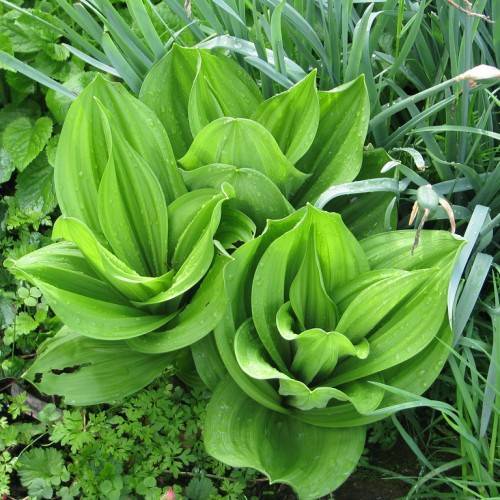
black false hellebore
Veratrum nigrum
Cycle:
Herbaceous Perennial
Watering:
Average
Hardiness Zone:
5 - 8
Flowers:
Flowers
Sun:
Full sun,part shade
Leaf:
Yes
Growth Rate:
Low
Maintenance:
Low
Poisonous To Humans:
Yes
Poisonous To Pets:
Yes
Drought Tolerant:
Yes
Salt Tolerant:
Yes
Invasive:
Yes
Care Level:
Medium
watering
Black false hellebore prefers moist, well-draining soils and needs regular watering. During the summer, water it every 7 to 10 days, allowing the soil to dry somewhat between waterings. In the cooler winter months, reduce the frequency to every 10 to 14 days. During periods of drought, provide enough water to keep the soil slightly moist.
sunlight
Black false hellebore (Veratrum nigrum) should be placed in direct sunlight for 4-6 hours a day, preferably in the morning or early afternoon when the sun is at its strongest. The plant also benefits from indirect light during the rest of the day, or when direct sunlight is unavailable (such as in the winter months). Too much direct sunlight can scorch the leaves, so it should be avoided.
pruning
Pruning black false hellebore (Veratrum nigrum) should take place in late summer or early fall, just before the plant enters its dormant state. Pruning the plant should include removal of any dead, dying or diseased growth, as well as any flower stalks when they have faded. When cutting back, maintain the plant’s natural shape by removing lateral (side) shoots, particularly those that have grown near the center of the plant. Aim for an overall height between 12 and 18 inches, but don't worry if you accidentally take off more than that. The plant will shrug it off and send up more shoots.
